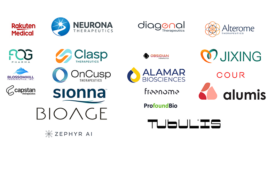The most common types of drugs in drug development are small molecules and biologics. Small molecules have a long history in the pharmaceutical industry and remain a pillar of modern medicine.
Conversely, biologics are more complex molecules derived from living organisms.
In this article, we provide a brief overview of common drug types, including biologics, small molecules, as well as cellular and gene therapy.
Biologics
Biologic drugs are made from living cells. Biologics are more complex and larger than small-molecule drugs. Because biologics tend to be difficult to manufacture, they are also often expensive.
Biologics are made using a process called biomanufacturing. The first step of the process involves creating a cell blank. Next in the biomanufacturing process, a master cell bank yields a substantial number of genetically identical cells.
Biologics have considerable variability in type and can include vaccines, gene therapies and monoclonal antibodies.
Recombinant DNA is a vital piece of biomanufacturing. Creating it involves isolating DNA from human cells, modifying it and eventually inserting it into a cell.
As the Encyclopedia of Toxicology notes, recombinant DNA plays a vital role in the process as it helps construct the gene that is used to “express desirable qualities” in the target organism.
Small molecules
Small molecule drugs are so-called because of their low molecular weight. While standards vary, small molecules tend to weigh less than 800 Daltons. Small molecule drugs are composed of simple chemical compounds that can bind to specific targets — often proteins — in the body to produce a therapeutic effect. In addition, small molecules’ compact size enables them to enter cells easily. Small molecules have a long history in the pharma industry and can be synthesized and manufactured in large quantities.
Cellular and gene therapy
Cell therapy, also called cellular therapy, involves using living cells to treat or prevent disease. Cells used in cellular therapy can be derived from the patient’s body (autologous cells) or donors (allogeneic cells). In addition, the technique can be used to replace or repair damaged tissue or cells.
As the FDA notes, cellular therapy examples include immunotherapies, cancer vaccines and stem cell-based therapies.
Gene therapy refers to delivering genetic material to cells to treat or prevent disease. The material is delivered to a cell via a vector, which are commonly engineered viruses bearing the therapeutic gene. After the gene therapy is delivered to target cells, it is incorporated into their DNA, producing a therapeutic protein or correcting a genetic defect.
Gene therapy can be used to treat:
- Inactivate a disease-causing gene.
- Correct genetic disorders resulting from mutations in a single gene.
- Introducing a new gene.
To date, the FDA has approved a relatively small number of cellular and gene therapy products.
The agency notes that gene therapy is a type of biological product.
One central cellular therapy, CAR-T, involves T cells, a type of lymphocyte that plays a vital role in the immune system. Chimeric antigen receptors (CAR) are receptor proteins genetically engineered to grant T cells the capability of homing in on a specific antigen to fight cancer. After CAR-T cells are produced in a lab, they are infused into a patient. To date, FDA has only approved a small number of CAR-T products, including Abecma (idecabtagene vicleucel), Breyanzi (lisocabtagene maraleucel), Kymriah (tisagenlecleucel), Tecartus (brexucabtagene autoleucel) and Yescarta (axicabtagene ciloleucel).
Another cellular therapy type, exosome therapy, involves using exosomes, small extracellular vesicles, to deliver therapeutic molecules to cells. A 2021 paper published in Stem Cell Investigation noted that exosomes “possess a higher therapeutic potential for various disease spectra due to their ability for intracellular shuttling.” The therapy, however, remains experimental, and the FDA notes that it has not approved any exosome products.
Filed Under: Drug Discovery and Development





Tell Us What You Think!
You must be logged in to post a comment.